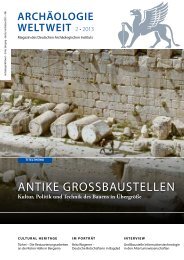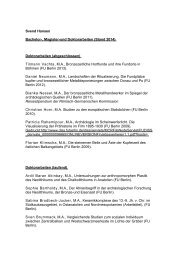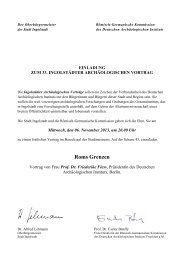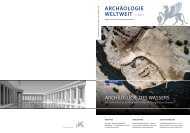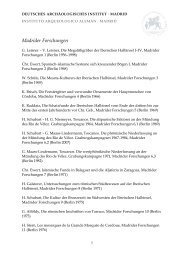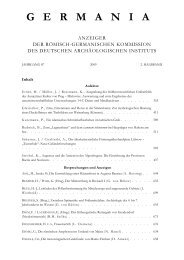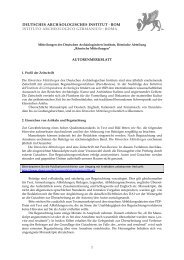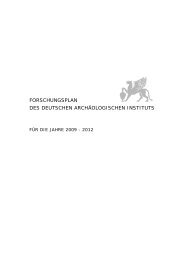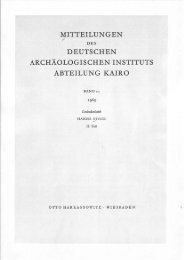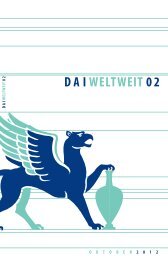Untitled - Deutsches Archäologisches Institut
Untitled - Deutsches Archäologisches Institut
Untitled - Deutsches Archäologisches Institut
Create successful ePaper yourself
Turn your PDF publications into a flip-book with our unique Google optimized e-Paper software.
20<br />
The double konak – wooden<br />
houses on the Princes’ Islands<br />
The Istanbul Department’s research into the city’s wooden<br />
houses, which for some time has been concentrated on the<br />
Princes’ Islands, has been further intensified this year (2011).<br />
For a wooden building on Büyük Ada, documentation of which<br />
began last year, a meticulous construction and restoration<br />
record has been produced (as part of a degree dissertation at<br />
Munich Technical University) in addition to a plan for the building’s<br />
preservation. In the western part of the island, documentation<br />
of a double house revealed a new type in the colourful<br />
array of Istanbul’s 19 th century wooden houses: one that is<br />
indebted to specimens of the Colonial style of North America.<br />
Begun in 2010, documentation of the building Çınar Meydanı<br />
35 (Fig. above), erected in 1880, was completed this year and<br />
the work was developed into a degree dissertation at Munich<br />
Technical University. The very thorough documentation not only records the current state of<br />
the building but also illuminates its eventful biography in many details. A piece of Istanbul’s<br />
urban history thus becomes materially tangible in the microcosm of a petit bourgeois, wooden<br />
house. Since the dissertation also contains many suggestions as to how to preserve and maintain<br />
the structure, we have grounds to hope that it may be saved.<br />
The twin house, Sulyoti İkiz Evleri (Fig. below), is a few years younger and was probably built<br />
in around 1900. Placing two identical, autonomous houses side by side so that they mirror<br />
one another was an economical way to create the impression of a grand residence; and in<br />
spite of the affordability of this manner of construction, it is likely that it satisfied the desire of<br />
the time for a sophisticated and prestigious outward appearance. The concept is one that is<br />
encountered fairly frequently on the Princes’ Islands and it derives from the North American<br />
Colonial style. The documentation of the building, now in a very poor state of repair, was<br />
carried out in cooperation with the Karlsruhe <strong>Institut</strong>e of Technology (KIT).<br />
Martin Bachmann



